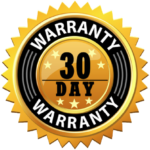️ Compliance & Safety Standards: Staying Legal and Protecting Lives
When it comes to safety barriers and barricades, compliance isn’t optional—it’s essential. Meeting federal, state, and local safety standards doesn’t just protect you legally; it protects workers, pedestrians, and the public from serious injury or worse. Whether you’re a contractor, event organizer, safety coordinator, or municipal buyer, understanding applicable regulations and selecting compliant equipment is non-negotiable.
Why Compliance Matters
Every day, safety barriers are deployed in high-risk environments—construction zones, public events, roadways, industrial plants. In these settings, an improperly rated or non-compliant barricade can lead to:
- Injuries and lawsuits
- Regulatory fines
- Project delays
- Loss of trust with stakeholders and the public
Failure to meet standards may also void insurance coverage in the event of an incident. It’s not worth the risk.
Key Safety and Regulatory Standards
Here are the major guidelines that should influence your purchasing decision:
✅ MUTCD (Manual on Uniform Traffic Control Devices)
Required by the Federal Highway Administration (FHWA), MUTCD provides standards for barricade types, colors, striping patterns, and placement for public roads and temporary traffic control zones.
Make sure your barricade is MUTCD-compliant if it will be used near traffic or roadwork.
✅ OSHA (Occupational Safety and Health Administration)
OSHA governs workplace safety and provides rules on:
- Fall protection near open hazards
- Work zone safety practices
- Access restriction and hazard identification
Choose barricades that clearly delineate restricted areas, reduce slip or trip risk, and support safe access routes.
✅ ADA (Americans with Disabilities Act)
ADA-compliant barriers help ensure accessible pedestrian pathways. Some requirements include:
- Detectable warnings for visually impaired individuals
- Proper spacing and height for cane detection
- Smooth pathways without protrusions
ADA compliance is essential for any barricade used in public pedestrian areas or events.
✅ ASTM & ANSI Standards
American Society for Testing and Materials (ASTM) and American National Standards Institute (ANSI) issue testing benchmarks for materials, reflectivity, and durability. High-quality vendors will certify to these standards.
What to Look for When Buying
- Labeling and Documentation: Look for products clearly marked as MUTCD- or OSHA-compliant and request spec sheets if needed.
- Reflectivity: For outdoor or nighttime use, choose barricades with Class 1 or Class 2 reflective sheeting per MUTCD.
- Base Stability: Check that the base meets wind resistance standards and won’t tip easily.
- Material Safety: Ensure materials are non-toxic, weather-resistant, and built for the expected environment.
- Training and Setup Guidance: Vendors who prioritize safety often include manuals, videos, or consultations.
Trusted Manufacturers vs. Import Risk
Be cautious with unbranded or low-cost imports. They may appear similar to compliant models but often lack documentation or proper testing, opening you up to significant liability. A reputable vendor should stand behind their products with verifiable compliance records.
FAQs
Q1: Do all barricades need to be MUTCD-compliant?
A1: Only if they’re used on or near public roadways. For indoor, private, or non-traffic environments, other safety standards (like OSHA or ADA) may be more applicable.
Q2: How can I verify that a barricade meets compliance requirements?
A2: Always ask the manufacturer for compliance documentation, spec sheets, or third-party testing results. Reputable vendors will provide this without hesitation


